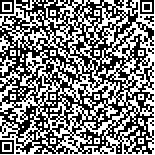吴福春,陈晓婷,余德标,等.温针灸对膝骨关节炎大鼠软骨细胞凋亡及MiR-27a介导的PI3K/AKT/mTOR信号通路的影响[J].中华物理医学与康复杂志,2024,46(2):105-111
扫码阅读全文

|
| 温针灸对膝骨关节炎大鼠软骨细胞凋亡及MiR-27a介导的PI3K/AKT/mTOR信号通路的影响 |
|
| |
| DOI:10.3760/cma.j.issn.0254-1424.2024.02.002 |
| 中文关键词: 膝骨关节炎 温针灸 自噬 miR-27a PI3K/AKT/mTOR信号通路 |
| 英文关键词: Osteoarthritis of the knee Warm acupuncture Autophagy Micro RNA-27a PI3K/AKT/mTOR signaling pathway |
| 基金项目:福建省自然科学基金(2021J01391);福建省卫生健康中青年骨干人才培养项目(2020GGA001) |
|
| 摘要点击次数: 3350 |
| 全文下载次数: 3591 |
| 中文摘要: |
| 目的 观察温针灸对早期膝骨关节炎(KOA)模型大鼠软骨细胞凋亡及miR-27a介导的PI3K/AKT/mTOR信号通路的影响。 方法 采用随机数字表法将50只SD大鼠分为对照组、模型组、温针灸组、抑制剂组及抑制剂+温针灸组(简称联合组),每组10只大鼠。于造模前3 d对抑制剂组及联合组大鼠给予局部miR-27a抑制剂药物干预;除对照组以外,其余各组大鼠均通过局部注射木瓜蛋白酶方法制成早期KOA大鼠模型。待造模完成后,联合组及温针灸组大鼠均给予内、外侧膝眼穴温针灸治疗,每次治疗30 min,共治疗14 d。模型组及抑制剂组大鼠则同期在固定器上制动30 min。于干预2周后采用苏木精-伊红(HE)染色观察各组大鼠软骨组织病理学改变,采用TUNEL法检测软骨细胞凋亡情况,采用ELISA法检测软骨组织白介素(IL)-1β和IL-6水平;采用WB技术检测软骨组织p-PI3K、p-AKT、p-mTOR、PI3K、AKT、mTOR、LC3-Ⅱ及Beclin1蛋白表达,采用qRT-PCR技术检测软骨组织中miR-27a含量。 结果 干预结束后发现温针灸组软骨细胞形态较模型组明显改善,抑制剂组及联合组软骨细胞形态较温针灸组进一步改善;温针灸组软骨细胞凋亡率明显低于模型组(P<0.05);与温针灸组比较,抑制剂组及联合组软骨细胞凋亡率均显著降低(P<0.05),抑制剂组与联合组软骨细胞凋亡率组间差异无统计学意义(P>0.05);温针灸组、抑制剂组和联合组IL-1β、IL-6、LC3-Ⅱ、Beclin1、miR-27a蛋白表达及mRNA水平均较模型组明显降低(P<0.05),抑制剂组及联合组上述指标均较温针灸组显著降低(P<0.05);温针灸组、抑制剂组和联合组p-PI3K/PI3K、p-AKT/AKT及p-mTOR/mTOR水平均较模型组明显升高(P<0.05),抑制剂组及联合组上述指标水平亦显著高于温针灸组(P<0.05),抑制剂组及联合组上述蛋白表达及mRNA水平组间差异均无统计学意义(P>0.05)。 结论 温针灸可能通过下调miR-27a表达,促进PI3K/AKT/mTOR信号通路激活,能抑制早期KOA模型大鼠软骨细胞过度自噬及凋亡,有助于减轻关节炎症反应及损伤,延缓关节退变进程。 |
| 英文摘要: |
| Objective To observe any effect of warm acupuncture on chondrocyte apoptosis and the miR-27a-mediated PI3K/AKT/mTOR signaling pathway using a rat model of early knee osteoarthritis (KOA). Methods Fifty Sprague-Dawley rats were randomly divided into a control group, a model group, a warm acupuncture group, an inhibitor group, and an inhibitor + warm acupuncture group (the combined group), each of 10. Three days before the modeling, both the inhibitor and combined groups were injected with miR-27a inhibitor. Papain was then injected in all groups except the control group to establish the early KOA model. After successful modeling, the combined and warm acupuncture groups were given 30 minutes of warm acupuncture at the medial and lateral Xiyan points daily for 14 days. The model and inhibitor groups were fixed for 30 minutes during those sessions. After the 2 weeks, hematoxylin-eosin staining was used to observe any pathological changes in the cartilage tissue. Terminal deoxynucleoitidyl transferase-mediated nick end labeling was used to detect chondrocyte apoptosis, and enzyme-linked immunosorbent assays were employed to observe the levels of interleukin 1β (IL-1β) and IL-6. Western blotting was used to evaluate the expression of p-PI3K, p-AKT, p-mTOR, PI3K, AKT, mTOR, LC3-II, and Beclin1 proteins in the cartilage tissue, while quantitative real-time polymerase chain reactions detected the content of miR-27a. Results After the intervention, the morphology of the chondrocytes in the warm acupuncture group had improved significantly compared to the model group, while that of the inhibitor and combined groups was better than among the warm acupuncture group. The rate of chondrocyte apoptosis in the warm acupuncture group was significantly lower than in the model group, while the rates of the inhibitor and combined groups were lower still. There was no significant difference between the inhibitor and the combination group on average. The average expression of IL-6, IL-1β, LC3-II and Beclin1 protein and of miR-27a were significantly lower in the warm acupuncture, inhibitor and combined groups than among the model group, with those of the inhibitor and combined groups significantly lower than among the warm acupuncture group, on average. The average p-PI3K/PI3K, p-AKT/AKT and p-mTOR/mTOR levels of the warm acupuncture, inhibitor and combined groups were significantly higher than those of the model group, with those of the inhibitor and combined groups significantly higher, on average, than among the warm acupuncture group. However, there was no significant difference between the inhibitor group and the combined group in their protein expression and mRNA levels. Conclusions Warm acupuncture may down-regulate the expression of miR-27a to promote the activation of the PI3K/AKT/mTOR signaling pathway, inhibiting excessive autophagy and apoptosis. That would relieve inflammation and damage, and delay degeneration in early KOA, at least in rats. |
|
查看全文
查看/发表评论 下载PDF阅读器 |
| 关闭 |
|
|
|